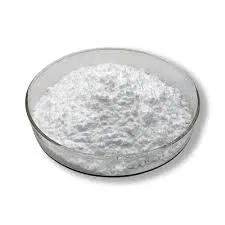
Aug . 20, 2024 06:42 Back to list
Understanding the Benefits of Redispersible Polymer in Construction and Coatings Applications
Understanding Redispersible Polymers Applications and Benefits
Redispersible polymers are a category of polymer powders that are designed to restore their properties upon re-dispersion in water. These versatile materials play a crucial role in various construction and industrial applications, particularly in the formulation of dry-mix mortars, paints, adhesives, and sealants. This article will delve into the unique characteristics, applications, and benefits of redispersible polymer powders.
What are Redispersible Polymers?
Redispersible polymer powders are typically created through a process called spray drying, where a liquid dispersion of the polymer is turned into a fine powder. This powder contains polymer particles that have been modified to ensure they can rehydrate and regain their adhesive properties when mixed with water. Commonly used redispersible polymers include polyvinyl acetate (PVAc), styrene-acrylic copolymers, and ethylene-vinyl acetate (EVA). The selection of the appropriate polymer depends on the desired properties of the end product, such as flexibility, adhesion, and water resistance.
Applications in Construction
In the construction industry, redispersible polymer powders serve as essential additives in various formulations. They are primarily utilized in tile adhesives, renderings, repair mortars, and self-leveling compounds. When added to these mixtures, redispersible polymers enhance adhesion and flexibility, which are critical for materials that must endure thermal and mechanical stresses. They also improve water resistance, ultimately contributing to the durability and longevity of the construction materials.
For instance, in tile adhesives, the inclusion of a redispersible polymer allows for better bonding between tiles and substrates. This is particularly important in environments prone to moisture, as traditional cementitious materials may struggle with adhesion over time. By leveraging the properties of redispersible polymers, manufacturers can create adhesives that perform well even in challenging conditions.
Benefits of Redispersible Polymers
redispersible polymer

1. Enhanced Performance One of the main benefits of using redispersible polymers is the significant enhancement in performance characteristics. They provide improved elasticity, flexibility, and adhesion properties, which are essential for ensuring that construction materials can withstand various stresses.
2. Reduced Water Sensitivity The water resistance that redispersible polymers offer helps in minimizing the susceptibility of the material to moisture-related issues, such as peeling, cracking, or mold growth. This characteristic is vital for external applications where exposure to water is inevitable.
3. Versatility Redispersible polymers can be tailored to meet a wide range of performance criteria. Their formulation can be adjusted to provide specific properties, such as gloss, texture, or application method, making them suitable for a diverse set of applications beyond just construction, including coatings and adhesives.
4. Sustainability In recent years, there has been a growing emphasis on sustainable building materials. Redispersible polymers can be used to formulate low-VOC products, contributing to healthier indoor air quality. Additionally, their performance can lead to more durable constructions, reducing the need for maintenance and repairs.
5. Cost Efficiency By improving the overall properties of mixes, redispersible polymers can result in lower material usage and reduced labor costs during application, ultimately leading to cost savings for contractors and developers.
Conclusion
Redispersible polymer powders have established themselves as invaluable components in modern construction and industrial applications. Their ability to improve performance, enhance water resistance, and offer versatility makes them crucial for meeting the demands of today's building techniques. As the industry continues to prioritize sustainability and efficiency, the role of redispersible polymers is likely to grow even further, shaping the future of construction materials and solutions.
-
Versatile Hpmc Uses in Different Industries
NewsJun.19,2025
-
Redispersible Powder's Role in Enhancing Durability of Construction Products
NewsJun.19,2025
-
Hydroxyethyl Cellulose Applications Driving Green Industrial Processes
NewsJun.19,2025
-
Exploring Different Redispersible Polymer Powder
NewsJun.19,2025
-
Choosing the Right Mortar Bonding Agent
NewsJun.19,2025
-
Applications and Significance of China Hpmc in Modern Industries
NewsJun.19,2025







